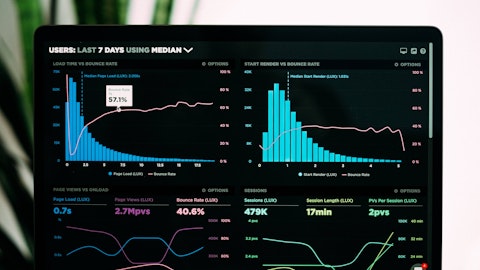Unidentified Analyst: Thank you. And for my second question about your marketplace. So how are your marketplace sales performing on Amazon and eBay? For example, does it help you that Amazon had two mega sales in one calendar year this year?
David Meniane: Our marketplaces are performing relatively in line with their platform growth. The growth on Amazon as a whole and Amazon just reported earnings has slowed down. For us, the biggest opportunity is to capture customers on e-com, which is CarParts.com. And for Q3, it was one of the fastest-growing channels. So our overall unit growth was significant, and the growth on e-com, CarParts.com, was even higher than that. So over time, for us, we need to get the mix of CarParts.com revenue to be higher and the marketplace mix to be lower. Now it doesn’t mean that marketplaces will decline. It just means that they need to grow at a slower rate than e-com, and e-com has to accelerate as well as the app. So I don’t know if Michael wants to add anything.
Michael Huffaker: Yes. I mean longer term, we want to continue to drive business towards our e-com site. We do have very, very, very high mobile traffic as a percent of the overall business. So the app and driving it to e-commerce where we’re going to get outsized growth. But eBay is an important partner of ours, and we’re going to continue to grow with them. And Amazon is an important partner, and we’ll continue to grow with them. But we’re going to continue to focus to drive e-com.
Unidentified Analyst: Thank you so much.
Operator: Thank you. One moment for our next question. Our next question comes from the line of Ryan Meyers from Lake Street.
Ryan Meyers: Hi, guys. Thanks for taking my questions. First one for me. I’m just curious, what sort of signs are you waiting to see where you feel like the overall demand environment is beginning to improve? It sounds that unit growth is still strong, but it’s kind of being offset by the price deflation. Just curious what sort of things you guys are looking at and what you’re paying attention to where you feel like that demand environment is improving?
David Meniane: Ryan, it’s David. Yes, I think there’s a lot of conflicting signals out there. All the indicators I’m looking at, some of them point up and some of them point down. And it’s really hard to tell what’s happening. I think, for me, when the environment changes or the macro changes or the Fed goes and trickles, touches interest rates, I think some companies kind of overreact. I think, for us, we try to keep just a long-term view. We have our vision, we have our strategy, we have our strategic priorities. We’ve built some very solid capabilities, and we have a good kind of resource allocation plan. So I have no doubt that we’re executing on the right road map with the right team and adequate resources. So for me, if we just continue executing and blocking and tackling, I think we can get to $1 billion in revenue and beyond. We can do it profitably, and we can do it without raising additional capital.
Ryan Meyers: Got it. That’s helpful. And then my other question, are there any levers that you guys can pull to help offset the negative impact of the price deflation that you’re seeing?
David Meniane: There’s a lot of levers that we can pull, and all of them kind of are all connected. We have to deliver a great customer experience, we have to ship faster, we have to reach the customers where they are. And that’s why we launched the Podcast. That’s why we have the JC Whitney initiative. There’s a lot of things that we can do. I think one of the biggest levers we can pull right now is expanding our assortment. And to some extent, we’ve done a lot of that this year, but you’re going to see more of that next year. Historically, we played just a very narrow set of categories. And so in simple terms, I think we can sell more brands, more products, more categories, we can build a brand for our private label. And over time, all of these should drive growth.


